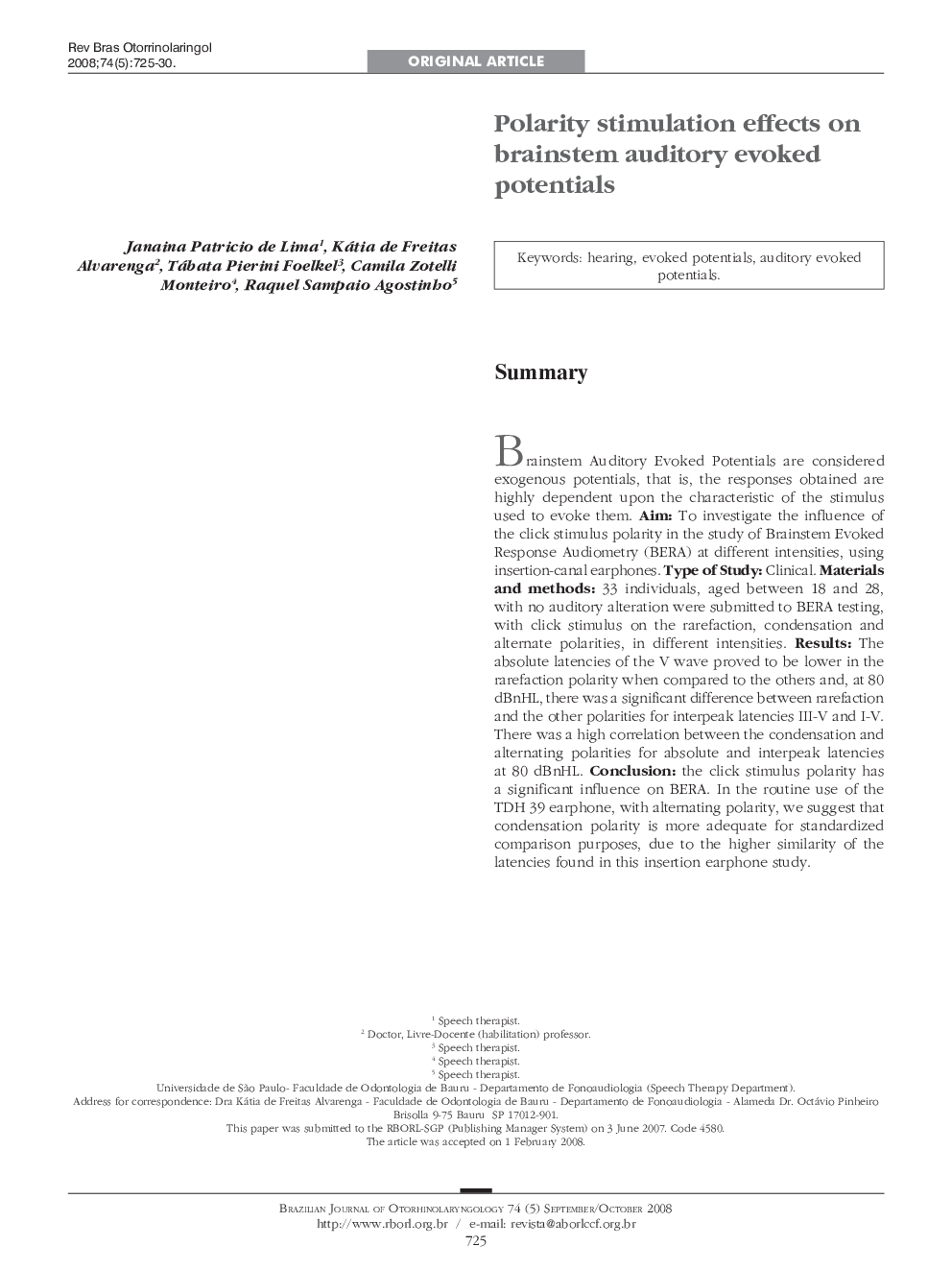| Article ID | Journal | Published Year | Pages | File Type |
|---|---|---|---|---|
| 4107029 | Brazilian Journal of Otorhinolaryngology | 2008 | 6 Pages |
SummaryBrainstem Auditory Evoked Potentials are considered exogenous potentials, that is, the responses obtained are highly dependent upon the characteristic of the stimulus used to evoke them.AimTo investigate the influence of the click stimulus polarity in the study of Brainstem Evoked Response Audiometry (BERA) at different intensities, using insertion-canal earphones.Type of StudyClinical.Materials and methods33 individuals, aged between 18 and 28, with no auditory alteration were submitted to BERA testing, with click stimulus on the rarefaction, condensation and alternate polarities, in different intensities.ResultsThe absolute latencies of the V wave proved to be lower in the rarefaction polarity when compared to the others and, at 80 dBnHL, there was a significant difference between rarefaction and the other polarities for interpeak latencies III-V and I-V. There was a high correlation between the condensation and alternating polarities for absolute and interpeak latencies at 80 dBnHL.Conclusionthe click stimulus polarity has a significant influence on BERA. In the routine use of the TDH 39 earphone, with alternating polarity, we suggest that condensation polarity is more adequate for standardized comparison purposes, due to the higher similarity of the latencies found in this insertion earphone study.
